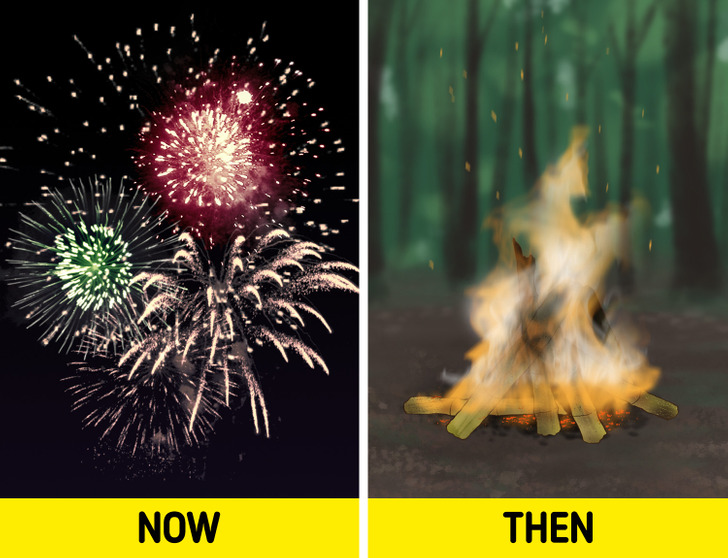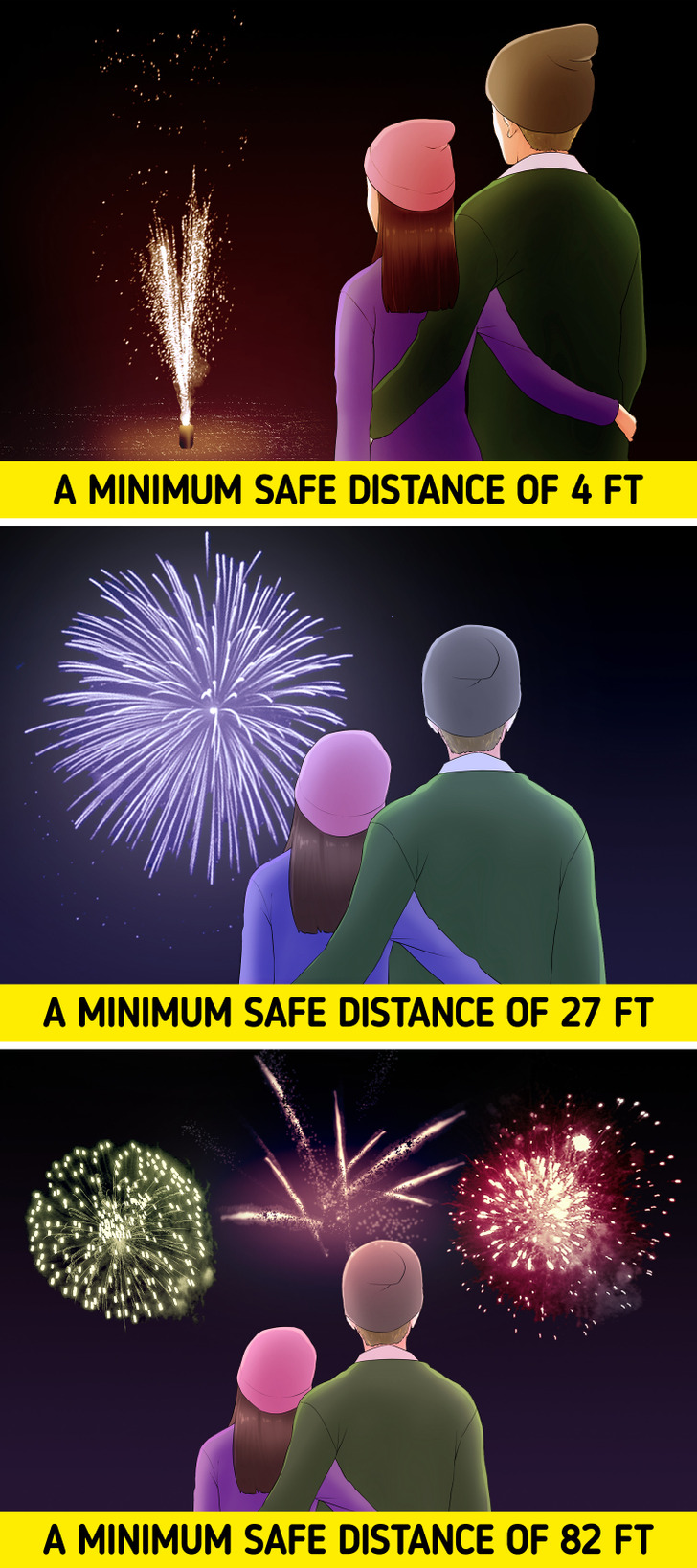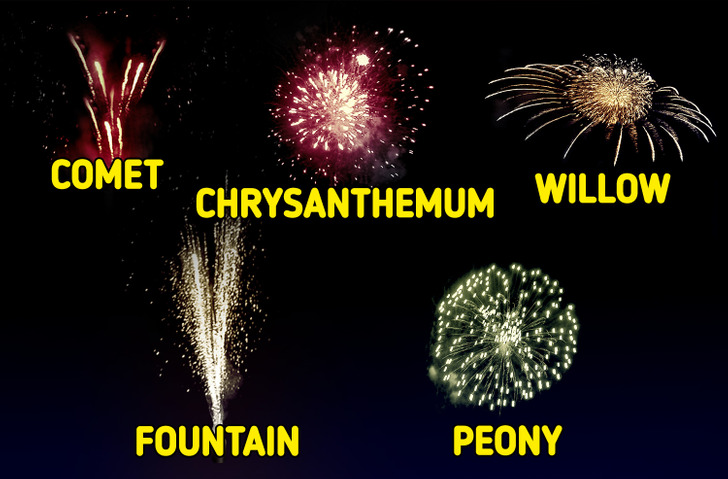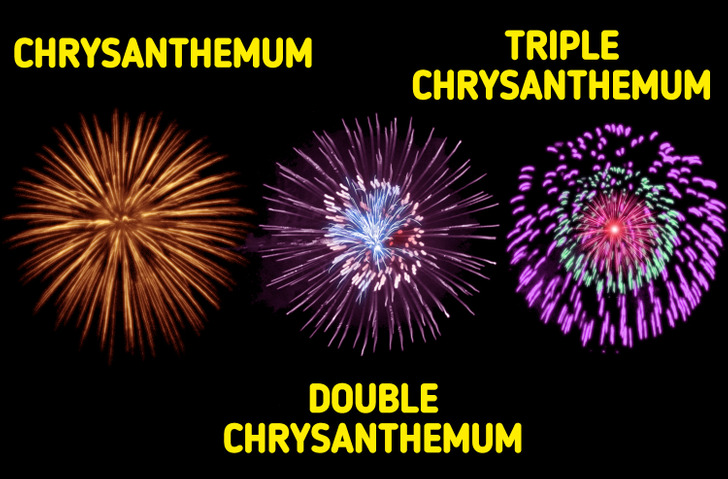A Guide to Types of Fireworks
Fireworks are an integral part of New Year celebrations and one of the ways to brighten up any festive evening. Whether you are enjoying the fireworks from indoors or outdoors, it is quite interesting to be able to identify each type of colorful flash in the night sky.
5-Minute Crafts is sharing information about how fireworks appeared and what types of fireworks exist.
NB: This article is for informational purposes only. You need to be extremely careful when setting off fireworks and always follow the instructions, as they can be potentially dangerous.
Where fireworks came from

Fireworks are a type of pyrotechnic that is used for aesthetically entertaining purposes. Most fireworks are designed in the following way — they shoot into the sky, explode loudly, and fall into colorful flashes. Fireworks are believed to have been invented in China around 200 BCE when the Chinese discovered that bamboo thrown into a fire could explode loudly. At that time, they used this trick to protect themselves from evil spirits.
Fireworks were brought to Europe by Marco Polo in 1295 after he traveled the Orient. In the first half of the 19th century, they added chemicals to fireworks, thanks to which the latter became multi-colored: strontium gave the red color, barium — green, copper — blue, and sodium — yellow.
Classification

As a type of pyrotechnics, fireworks are split into several classifications:
- Fireworks of the 1st category are meant for indoor use or for use at a minimum safe distance of at least 4 ft.
- Fireworks of the 2nd category are designed to be used outdoors at a minimum safe distance of at least 27 ft.
- Fireworks of the 3rd category are used outdoors as well. The minimum safe distance is at least 82 ft.
- Fireworks of the 4th category are designed only for professional use and require special preparation and certain skills.
Types of fireworks

There are numerous types of fireworks. Here are some of them:
- One of the most widespread types of fireworks is the rocket. After being launched into the air, it can reach an enormous height (up to 100-200 ft) and then explode with a loud bang.
- The fountain looks very elegant just like the name suggests. Small versions of these fireworks relate to the 1st category and in this case, they can even be used indoors. They don’t cause a strong explosion and glow, calmly pleasing the eyes with nice colors.
- The comet is a relatively simple type of firework. After being launched, the fireworks scatter in the air leaving a shiny trace afterward. It looks like a comet flying in the sky from a distance. This type is normally used as a prelude to something more spectacular, the willow fireworks.

- The willow is a high-rise firework that got its name because it resembles a giant golden willow. It leaves delicate golden trails that hang in the sky for about 10 seconds.
- The peony is widespread type of firework. When someone mentions a firework, it’s normally the first type that comes to mind. It doesn’t leave any colorful trails but just explodes after reaching a certain height in the sky. This firework resembles a bright bouquet of lights or a large spectacular flower (hence, the name).
- The chrysanthemum is named after the famous flower and resembles the Peony to some extent. But unlike the latter, it leaves glowing trails after itself. These are classic fireworks that create a spattering of bright lights in a circular shape. Chrysanthemums sometimes have several layers located symmetrically to each other and in this case, these are called double or triple chrysanthemums.